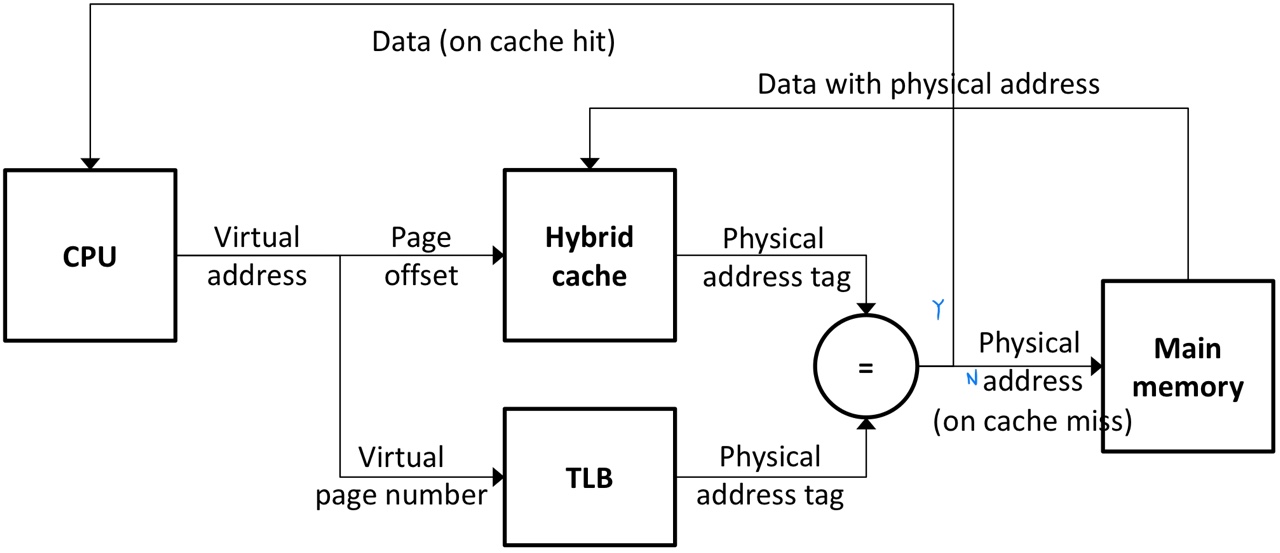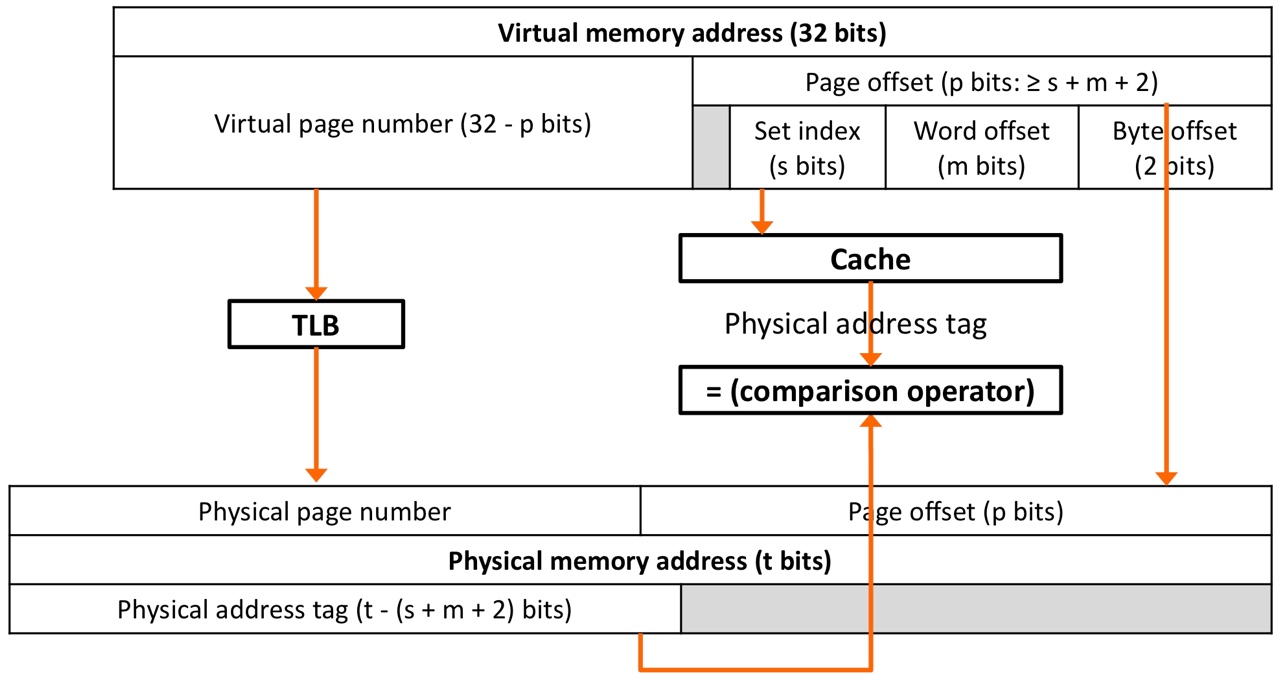contents: 0-1. CA Intro
Integrating TLB, Cache, Memory
Aliasing in virtually addressed cache
-
The same virtual address of different processes can be mapped to different physical address
- Wrong cache hit can occur
-
Different virtual addresses of different process can be mapped to the same physical address
(when some memory space is shared by multiple processes)- The physical memory can be cached in two different locations
- Coherency problem can happen
One program writes the data without the other program being aware that the data had changed
Simple solution
- Flush cache at context switching -> too high miss rate
- Context switch: In multi-process environments, multiple processes share a single CPU
Hybrid cache: virtually-indexed & physically-tagged cache
-
No aliasing problem
-
TLB & cache are accessed in a parallel manner (fast)

-
32-bit virtual address
-
Page size = Bytes
-
Physical memory size = Bytes (t-bit physical address)
-
Block size = words
-
Num of sets in a cache = sets

Typical multi-level cache setup with TLB
-
Typical L-1: hybrid cache (virtually-addressed, physically tagged)
- To reduce hit time and miss rate
-
Typical L-2: physically-addressed cache
- For simple implementation
- In addition, usually L-2 si large
So, because p < s + m + 2, we cannot use hybrid cache